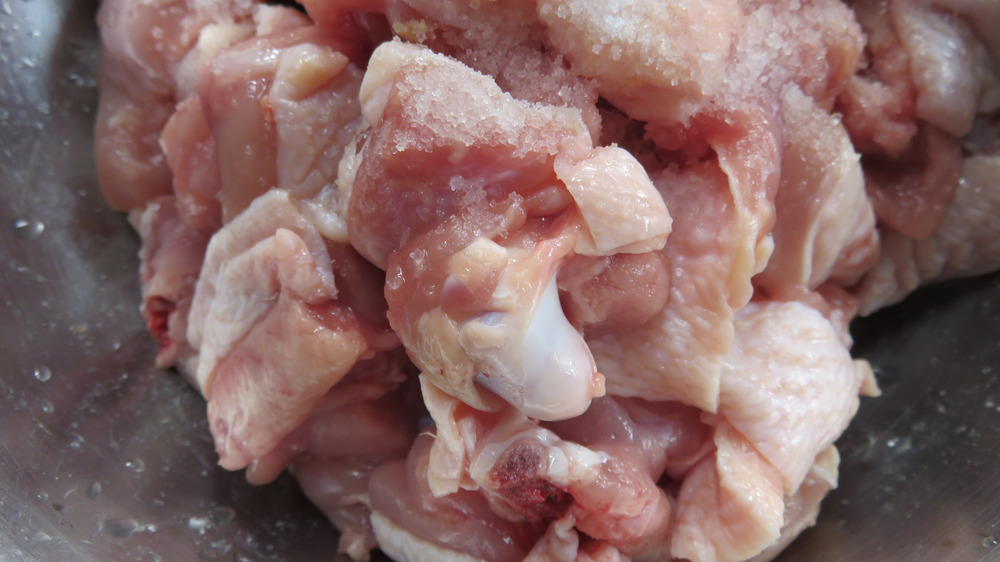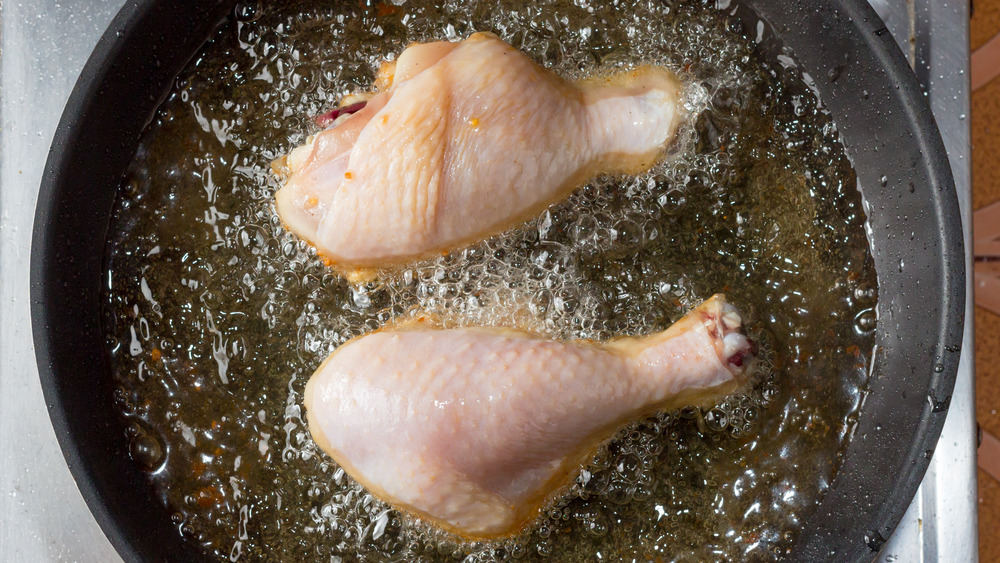The Truth About Pink Chicken Meat
If you're someone who likes their steaks or burgers cooked somewhere between rare and medium, you're happy when you cut into your meat and see some pink (or red, if you're a rare-steak person) in the middle. However, if you see pink when you cut into a chicken thigh or bite into a wing, you likely don't have the same reaction. That's because many of us have been raised to believe that pink chicken is synonymous with undercooked chicken. And we know that, unlike red meat or some types of fish, poultry must be fully cooked to be edible.
Consuming undercooked or, worse, raw chicken can lead to foodborne illnesses or food poisoning, as the meat may contain harmful bacteria like salmonella and Clostridium perfringens, the Centers for Disease Control and Prevention warns. But what many people may not realize is that sometimes eating pink chicken is actually okay. Here's what you need to know, and when your pink poultry is safe.
The color of chicken doesn't indicate doneness
It's probably been drilled into your head that if chicken has any pink in it, it's not fully cooked. Meaning, it's unsafe to eat. While that may be a good general rule of thumb to follow, it isn't always the case. According to the U.S. Department of Agriculture (USDA), it's the temperature — not the color — that determines the doneness of poultry (via The Kitchn). The USDA says that as long as chicken is cooked to an internal temperature of at least 165 degrees Fahrenheit, it's safe to consume.
So, why is some chicken still pink even when it's reached the minimum temperature? Insider reports that the color of your meat can be affected by any number of factors, from how the chicken was raised to the age of the bird itself. Younger chickens, for instance, tend to have pinker meat even when fully cooked because of the bone marrow that leaks out of their bones. So if you see pink when you cut your chicken, take its temperature before tossing it — it may be okay to eat after all.

